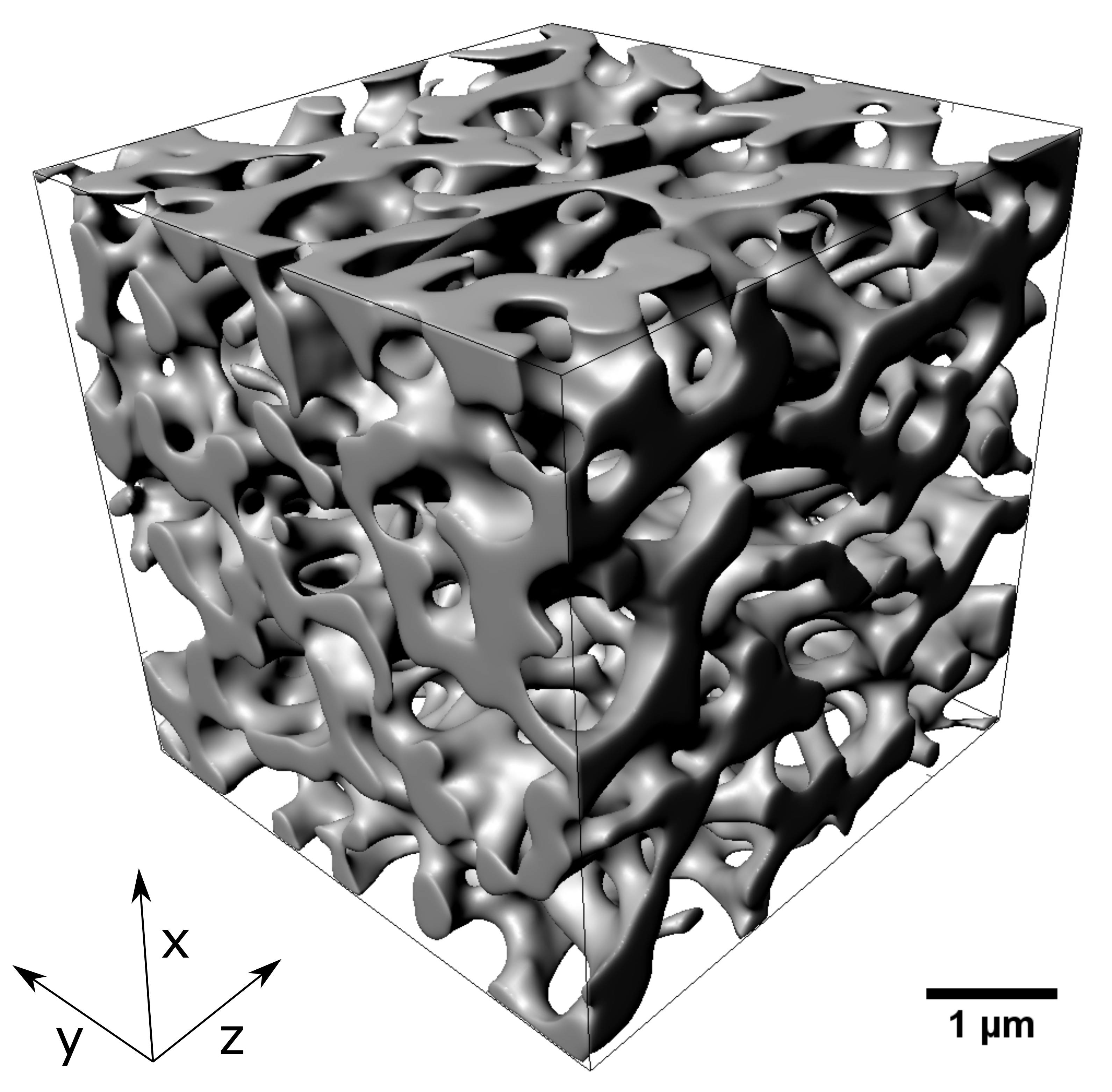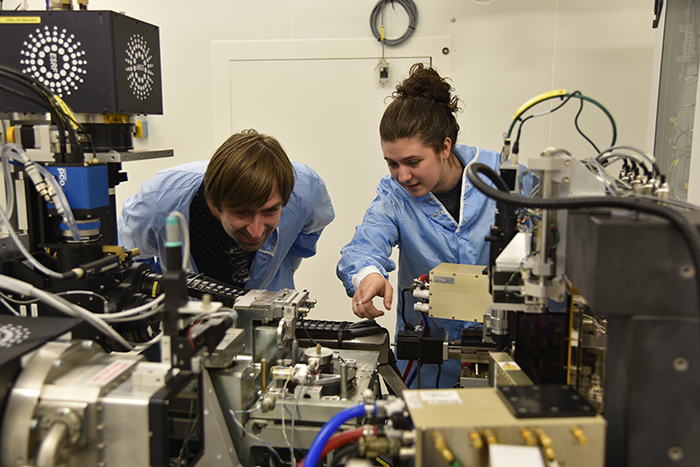- Home
- News
- General News
- Ultra-white beetle...
Ultra-white beetle scales may be the key to more sustainable paint
29-08-2019
An international team of researchers has managed to mimic the colour of the Cyphochilus beetle scales - one of the brightest whites in nature, thanks to the ESRF’s imaging capabilities. This could help the development of ultra-white, sustainable paints.
Cyphochilus beetle scales are one of the brightest whites in nature. Until now, researchers did not known how their ultra-white appearance is created. X-ray nanotomography experiments at the ESRF have shown that the nanostructure in their tiny scales creates the colour, not the use of pigment or dyes.
Andrew Parnell, from the University of Sheffield and corresponding author of the study said: “In the natural world, whiteness is usually created by a foamy Swiss cheese-like structure made of a solid interconnected network and air. Until now, how these structures form and develop and how they have evolved light-scattering properties has remained a mystery.”
The findings show that the foamy structure of the beetles’ scales has the right proportion of empty spaces, in a highly interconnected nano-network, which optimise the scattering of light – creating the ultra-white colouring.
 |
|
X-ray nanotomography of the optical structure inside the beetle scale. Credits: Burg S., et al, Communications Chemistry, 29 August 2019 |
To measure the tiny individual beetle scales, researchers used the X-ray imaging facilities at the beamline ID16B at the ESRF. “The intense X-ray source at the ESRF meant whole intact scales could be measured, which was pivotal to understanding them and modelling how they scatter light”, explains Parnell.
 |
|
Andrew Denison and Stephanie Burg in the experimental hutch of beamline ID16B. |
One of the applications that mimicking this white could have is as replacement for titanium dioxide in paints. Conventional white paint contains nanoparticles of titanium dioxide, which scatter light very strongly. However, the use of titanium dioxide is harmful to the environment as it contributes nearly 75 per cent of the carbon footprint of each tin of paint that is produced.
The team managed to recreate the beetles’ structure in the lab with a polymer, which could be used as a sustainable alternative to titanium dioxide in white paint: “Ideally, we could even recycle plastic waste that would normally be burnt or sent to landfill, structure it just like the beetle scale and then use it to make super white paint. This would make paint with a much lower carbon footprint and help tackle the challenge of recycling single-use plastics”, adds Parnell.
In order to follow how the synthetic material formed they used the ESRF’s beamline ID02 to confirm the formation mechanism as the layer dried and became structured.
Stephanie Burg, a PhD researcher at the University of Sheffield and first author of the paper, said: “This research answers long-standing questions about how the structure inside these scales actually forms and we hope these lessons from nature will help inform the future of sustainable manufacturing for paint”.
The work was carried out in collaboration with the coatings company AkzoNobel, makers of the Dulux paint.
Reference:
Top image: A close-up image of the Cyphochilus beetle, showing its white scales. Credits: Burg S., et al, Communications Chemistry, 29 August 2019.



